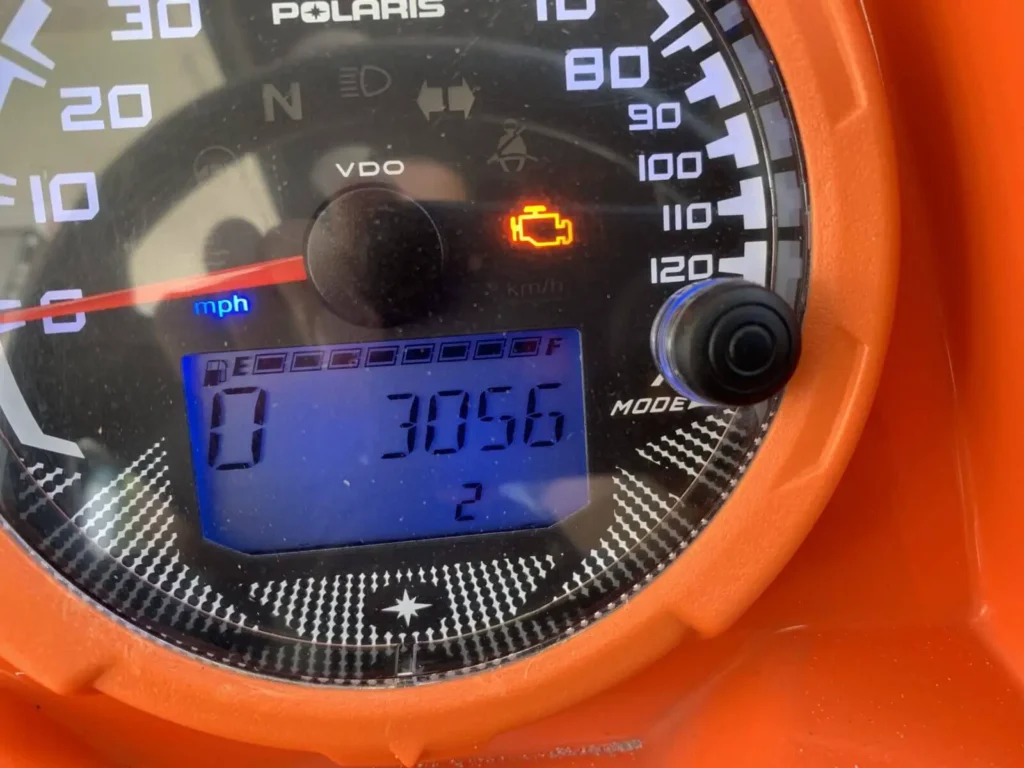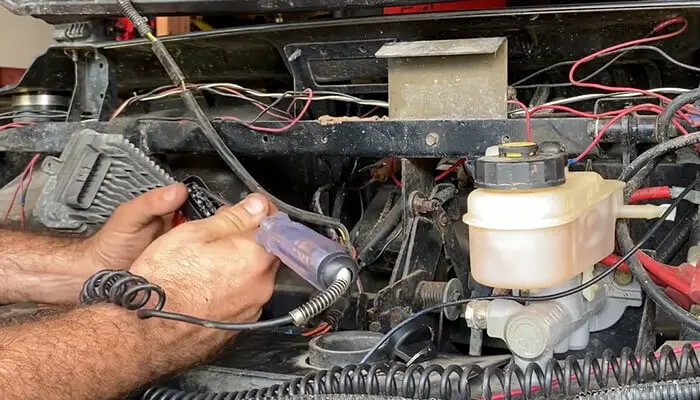Your Polaris Ranger performance depends on several factors that need to be tracked and monitored so that it is functioning to its full potential.
In modern automobiles, the ECM is one of the most important components. But what if you experience ECM problems frequently? No worries!
Here, you’ll have a discussion about Polaris Ranger ECM problems.
Typically, Polaris Ranger suffers from an engine that doesn’t start and a loss of acceleration. Moreover, loss of mileage and engine stalling occur if the ECM doesn’t function properly. All of these problems require the replacement of ECM.
This short answer won’t be enough for you. So stick with the article to know each problem and solution in detail.
Let’s start with how you can diagnose your Polaris Ranger ECM problems.
How to Diagnose Polaris Ranger ECM Problems

The Engine Control Module (ECM) is a complex electrical circuit that processes information sent by engine sensors to tweak the performance of your automobile’s engine. It is often termed the Engine Control Unit (ECU).
Actually, you can diagnose ECM problems only in one way. You should check the fuel and spark to know if ECM is working properly or not.
If both of them work, but the car doesn’t start, then borrow a new ECM and replace it with the old one. If your vehicle starts without any issue, there is no doubt that the problem lies with ECM.
4 Common Polaris Ranger ECM Problems, Reasons, and Solutions

In layman’s terms, ECM is your vehicle’s brain or main computer. Mostly, it regularly observes the air-to-fuel ratio and the engine timing and controls the transmission of your Polaris Ranger.
So, this important organ of your vehicle can struggle with multiple problems. Let’s shed light on that particular problem and the solution in that order.
| Problem | Symptoms | General Solution |
| The Engine won’t start | ECM is unable to command the sensors |
|
| Flashing Check Engine Light | The ECM is malfunctioning and throwing error codes | |
| Loss of Acceleration, And Mileage | ECM can’t provide the correct air/fuel ratio | |
| Engine Stalling | The ECM is unable to provide the proper spark, and fuel commands |
Problem 1: The Engine Won’t Start
ECM monitors the primary sensors necessary to run your Polaris Ranger 1000 XP. The crankshaft, mass air flow, and 02 sensors make calculated decisions about spark ignition and fuel injections.
Reason
These sensors are vital parts of the module. Any problem in the ECM may result in the failure to command these sensors. So, as a result, your vehicle will crank but won’t start. So, your vehicle will crank but won’t start
Problem 2: Flashing Check Engine Light
Flashing of the “CHECK ENGINE” light on the dashboard is associated with a faulty ECM or ECU. Sometimes, it may turn on additional warnings like the charging system and traction control lights.

Reason
Your Ranger may show error codes (like P0600, P0601, P0602, etc.) on the screen beside the speedometer. Don’t get nervous if you see something like that. Hang on with us, as we will talk in detail about it in the troubleshooting section.
Problem 3: Loss of Acceleration And Mileage
As the ECM controls your Polaris ranger’s air-to-fuel ratio and transmission, it can fail to provide the correct command. This happens when it wrongly reads the throttle position.
So as a result, your vehicle will show sluggish acceleration. Sometimes, it can make the gas mileage drop drastically.
Reason
The main reason for this issue is that your ECM is not providing the correct air or fuel ratio.
Problem 4: Engine Stalling
Engine stalling, surging, and stalling are common problems of a damaged ECU or ECM of the 2006 Polaris Ranger 700 XP. It controls your engine’s timing and fuel usage by providing correct spark time and fuel emission commands.
However, Your Polaris Ranger is equipped with PVT (Polaris Variable Transmission). This auto transmission system is also guided by the module.
An engine control module (ECM) manages various components related to engines, including emissions equipment and fuel injectors. So, a faulty module won’t be able to match vehicle power, engine output, and changing load conditions.
Reason
If the engine stalls frequently, the reason is that the ECM cannot provide the proper spark and fuel commands. The proper spark and fuel commands are necessary to function the engine properly.
Troubleshooting of a Bad ECM
Troubleshooting a bad ECM of the 2006 Polaris Ranger 700 XP and 1000 XP Polaris Ranger can be tricky. But don’t you worry! We will talk about some easy fixes for some external issues. Commonly found ones are damaged wiring and corroded wire harnesses. Now, let’s get down to troubleshooting!
Damaged or Corroded Wires
Locate the ECM of your vehicle. Right behind the left rear seat, it’s mounted on the firewall. Lift up that seat and pull out the access panel by pressing down on the top. Then You will see a bundle of wires connected to the ECM unit via 2 plugs. (see the figure below)

This main wire harness provides power and sensor feedback to the ECM for optimal engine operation. Check for any kind of damage or corrosion. Frayed wiring will cause the unit to malfunction. Also, corrosion can get inside the internal circuit.
So, remove the damaged wire harness and replace it with a new one. A good quality ECM to Engine Harness will cost you around $100.
Fixing Error Codes
Remember those alien-looking codes shown as output by your ECM? Each code refers to a particular problem with your vehicle. So, I strongly suggest you head to your nearest Polaris Service Center. They can diagnose those error codes and solve the related problem that threw those codes.
Replacing a Bad ECM with a New One
If your ECM faces an internal problem, then I’m sorry to say you have to get rid of it. Repairing the circuit of the complex unit is very difficult. Even service centers will suggest you replace it with a brand-new unit.
Go to this easy-to-follow guide and change your ECU yourself!
- Under the passenger seat, a sealed connector connects to the diagnostic plug. Remove the driver and lift up the passenger seat to reach the diagnostic connector.
- It is then necessary to connect the Vehicle Interface Cable to the diagnostic connector on the Digital Wrench. Now choose ECUR Replacement from the special tests menu and read the guidelines for replacing the ECU.
- To access the ECU, turn the cargo box. To remove the ECU from the back of the cab, remove the four T-25 Torx head screws.
- Turn off the ignition and pull the connector lock button to free the connector from the ECU. One thing to remember is that you should hear a click when the connector is fully open.
- Now, the ECU must be unplugged from the vehicle. When reinstalling the unit, reverse the instructions and secure the mounting screws to the guidelines.
Prevention for Polaris Ranger ECM Problem

Maintaining a proper take-care routine can make your vehicle live longer. Similarly, you can ensure the long functionality of your Polaris Ranger.
Let’s get to know those few things you need to look after regularly.
- Replace the oil and filter as needed.
- Examine the air filter regularly.
- Clean the corrosion regularly from the wire.
- Regularly inspect spark plugs clutch.
FAQs
How do I read my Polaris trouble code?
To read the Polaris trouble code, log in to your Polaris Account. Login to any Polaris brand website by clicking ACCOUNT in the upper-right corner. You will then be able to select your vehicle under the MY GARAGE tab. Click the LOOKUP CODE button under Error Code Lookup.
How can I make my Polaris Ranger faster?
To increase the speed of the Polaris Ranger, you need to install a clutch kit. You can also achieve quicker rates of your Polaris Ranger’s acceleration by installing a clutch kit. So, both speed and acceleration need a clutch kit to increase the rates.
How many miles do the Polaris Rangers last?
Usually, the Polaris Ranger can last around 7,000 miles. Regardless of how many miles you drive, a good average is around 7,000. These Polaris Rangers are considered high mileage vehicles because they have this many miles on them.
EndNote
Here is the end of the discussion of Polaris Ranger ECM problems. Hopefully, you got to know the issues your Polaris Ranger ECM may go through.
Your car will malfunction if the ECM develops any problems because it is considered the brain of the vehicle. However, it is an emergency to resolve the issue. Most of the cases, you need to replace the ECM. And to do so, it’s better to go to a professional technician.
I’ll come with another of your queries. Have a great day.
- How to Tell if Your 4×4 Switch is Bad [Explained] - April 18, 2024
- 4 Common Can-Am Outlander 570 Problems [Solution Guide] - April 18, 2024
- Easy Fixes on 1994 Chevy Silverado Transmission Not Shifting - April 18, 2024
